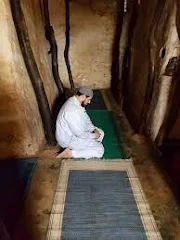Northern Region has a ton of lovely views which fills in as an objective for unfamiliar and nearby sightseers in Ghana. Inside the Northern Region, you gain admittance to the rich Northern culture, wonderful local people, food, and so forth.
Whether you are an independent traveler, with a family, on a vacation, or excursion for work the North brings something incredible to the table for you.
In this article, we will list the different (top) traveler objections in the Northern Region of Ghana, their definite areas and other pertinent data that might be helpful for a vacationer.
 |
| Mole National Park |
Mole National Park
Mole National Park is Ghana's most memorable untamed life Located at Damongo, 146km south east of Tamale, in the Northern Region of Ghana, Mole National Park is a 12 hour venture by street from Accra.Perhaps of the biggest city in the Savanna Region, Tamale has numerous tourist attractions yet the Mole National Park stands tall among the rest. With the biggest untamed life shelter, Mole National Park has been an appealing site for the majority in the country because of its extraordinary species.
The ongoing area of the Mole National Park was at first involved by occupants of the Northern Region, notwithstanding, they were moved to clear way for the area to be utilized as a save.
The renowned creatures that can be found at the Mole National Park are the African shrub elephants and impalas. A review directed on the Park demonstrates north of 800 elephants can be found at the Park. With regards to tree species, Burkea Africana, Isoberlinia Doka, and Terminalia Macroptera are a portion of the animal varieties viewed as in the woodland.
While elephants and pronghorns overwhelm the untamed life in the woods, creatures, for example, bison and hippos can likewise be tracked down in the backwoods despite the fact that tiny concerning populace. Monkeys have likewise made the Park their place of home with the Olive primates, high contrast colobus monkeys, the green vervet, and patas monkeys all dwelling at the recreation area.
Larabanga Mosque
Larabanga Mosque is situated in the town of Larabanga in the Northern piece of Ghana. Implicit the Sudano-Sahelian structural style, this Mosque is the most seasoned mosque in Ghana and one of the most established in the West Africa Sub Region. It has been one of the top objections for some vacationers visiting the Northern Region of Ghana. It is developed basically from stopped earth and has gone through a few restorations to now. It is one the Ghana’s most preserved religious sites and often referred to as the Mecca of Ghana. |
| Salaga Slave Market |
Salaga Slave Market
Salaga Slave Market is a historical market of iron and shackles. You presumably have perused a ton about the fierce nineteenth Century slave exchange including Africa, Europe and the Americas where Africans were taken from their homes and transported to the Americas like Cargoes to work in ranches and fabricating firms.Yet, even before this period, slave exchange existed Africa in the sixteenth and seventeenth hundred years, however under extremely altruistic circumstances contrasted with the Trans-Atlantic slave exchange.
A rare example of proof of the presence of slave exchange Africa before the nineteenth century can be found in Salaga, explicitly at an area currently known as the Salaga Slave Market.
The Salaga slave market situated in Salaga, the regulatory capital of the Gonja East locale in the Northern Region used to be a significant West African city where merchants from the northern piece of Africa met with West African dealers to exchange products like cowries, globules, materials, creature stow away and gold.
Be that as it may, in the later piece of the eighteenth 100 years, the idea of exchange Salaga changed to incorporate the trading of people for wares. Individuals were offered to brokers coming from the northern piece of Africa in return for wares like cowries, fine material and cowhide.
The merchants from the North who liked to be paid with people, for the most part involved them as house helps or aides who might help them in running their everyday exchanging exercises, it was absent any trace of brutalities or savage as the sold slaves were by and large treated well.
With the appearance of the Europeans in the eighteenth 100 years and beginning of the feared Trans-Atlantic slave exchange, the Salaga slave market moved its concentration from exchanging with merchants from the north to exchanging with Europeans who offered something else for their slaves.
Today, the Salaga slave market is a pale sorry excuse for itself, ailing in energetic business exercises and has been moved toward engine park. Aside the Slave market, Salaga likewise gloats of other slave landmarks including a popular slave graveyard and a slave stockroom. The slave distribution center was utilized to house and keep the slave hostage until they were moved to the beach front regions and auctions off to the Europeans residing on the coasts.
For any traveler needing to more deeply study subjugation and how slave markets and focuses seemed to be, Salaga, a town once well known for its exchange slaves and its liveliness as a West African exchanging focus, is a should visit.
Thank you for your reading and for your suggestion, please kindly leave us a comment.
We really appreciate your coming.













.jpg)

.jpg)

